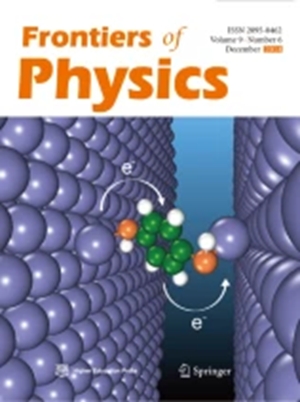Development of an APPLE III undulator prototype with three-dimensional force compensation for SHINE
IF 6.5
2区 物理与天体物理
Q1 PHYSICS, MULTIDISCIPLINARY
引用次数: 0
Abstract
The Shanghai high-repetition-rate XFEL and extreme light facility (SHINE) plans to install several elliptically polarizing undulators (EPUs) as afterburners behind the planar undulator section to obtain nearly saturated circularly polarized free-electron laser (FEL) radiation. Therefore, the SHINE R&D project needs to develop a 4-m-long EPU with an effective magnetic field of 1.5 T, a period of 68 mm, and a minimum gap of 3 mm. A magnetic force compensation EPU prototype has recently been built and tested at the Shanghai Synchrotron Radiation Facility (SSRF) based on the addition of permanent magnets. This prototype can realize magnetic compensation under various polarization modes in all working gaps, thereby reducing the deformation of the girders and maintaining sufficient rigidity of the mechanical structure. A girder deformation monitoring system was established to obtain real force compensation feedback. The final magnetic field measurement results meet the physical requirements, and the proposed scheme can be used as an alternative to the EPU with a high magnetic field and large magnetic force.SHINE三维力补偿APPLEⅢ型波动器样机的研制
上海高重复率XFEL和极光设施(SHINE)计划在平面波荡器部分后面安装几个椭圆偏振波荡器(EPU)作为加力器,以获得接近饱和的圆偏振自由电子激光器(FEL)辐射。因此,SHINE研发项目需要开发一个4米长的EPU,有效磁场为1.5 T,周期为68毫米,最小间隙为3毫米。最近,在上海同步辐射设施(SSRF)建造并测试了一个基于添加永磁体的磁力补偿EPU原型。该样机可以在所有工作间隙中实现各种极化模式下的磁补偿,从而减少大梁的变形,保持机械结构的足够刚度。建立了主梁变形监测系统,获得了真实的力补偿反馈。最终的磁场测量结果满足物理要求,所提出的方案可以作为高磁场和大磁力的EPU的替代方案。
本文章由计算机程序翻译,如有差异,请以英文原文为准。
求助全文
约1分钟内获得全文
求助全文
来源期刊

Frontiers of Physics
PHYSICS, MULTIDISCIPLINARY-
CiteScore
9.20
自引率
9.30%
发文量
898
审稿时长
6-12 weeks
期刊介绍:
Frontiers of Physics is an international peer-reviewed journal dedicated to showcasing the latest advancements and significant progress in various research areas within the field of physics. The journal's scope is broad, covering a range of topics that include:
Quantum computation and quantum information
Atomic, molecular, and optical physics
Condensed matter physics, material sciences, and interdisciplinary research
Particle, nuclear physics, astrophysics, and cosmology
The journal's mission is to highlight frontier achievements, hot topics, and cross-disciplinary points in physics, facilitating communication and idea exchange among physicists both in China and internationally. It serves as a platform for researchers to share their findings and insights, fostering collaboration and innovation across different areas of physics.
 求助内容:
求助内容: 应助结果提醒方式:
应助结果提醒方式:


